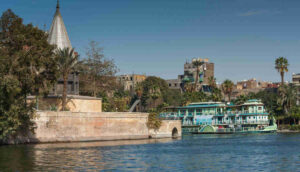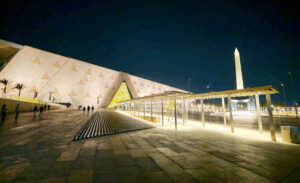There are many curiosities about the Cairo Citadel (also called ‘Saladin’s’), because its history is very long and in it happened important episodes for the city and the country. And since it is one of the most visited places by travelers (many of our tours include it, especially those who spend several days in Cairo), we show here some of the most striking.
Why ‘Saladin’s’?
The Cairo Citadel is often referred to as the ‘Citadel of Saladin’. It was this 12th century Ayyubid sultan who was the architect of its construction… but it was not completed until the following century. However, in recognition of this warlord whose rule represented one of the high points of medieval Egypt, the name has been retained throughout the ages for this great walled enclave atop the Mokattam Hills.
And why not ‘Mehmet Ali’s’?
The Cairo Citadel has undergone changes and extensions during many periods of its history. One of the sultans who developed more improvements was the Mamluk al-Nasir Muhammad in the fourteenth century (as we shall see). But if we look at what our eyes can see today, the ruler who modified its appearance and layout the most was Mehmet Ali, the Khalid of Egypt at the beginning of the 19th century, during the period of Ottoman rule. Unfortunately, he demolished many buildings, but erected others. Among them, his great symbol: the Alabaster Mosque, where his tomb is located.
Final destination of the aqueduct
The great aqueducts, from Roman times but also later, were intended to ensure the water supply in a given city. And more specifically, in the most strategic place of that city: its government palace, often located in a fortress. This is what happened in Cairo with its Citadel: from its construction until the second half of the 19th century, this was the official residence of sultans and governors. That is why, in the 14th century, the aforementioned al-Nasir Muhammad decided to undertake the construction of the Nile Aqueduct, which brought water here from the Nile River. For this purpose, a kind of waterwheel was built to lift the water up to a tower on the banks of the Nile near the Fustat neighborhood, and then channel the water through the aqueduct to the citadel.
The Citadel and beyond
The walled enclosure of the citadel, with its towers, is relatively well preserved and practically intact. However, in its immediate surroundings there were other spaces that were also closely related to it and that, in some way, were part of its daily life. For example, the large stables and, in the lower area, the so-called ‘hippodrome’: it was a large elongated enclosure used for military and equestrian parades, as well as a horse market. If you look closely at the map of Cairo, you will still recognize this large elliptical space on Salah El-Deen Street.
Disastrous’ barter
One of the elements that can be seen in the Cairo Citadel is what some historians have considered the ‘most disastrous barter’. We speak of the clock of the Alabaster Mosque and that term is used because it was a gift from the French King Louis Philippe I to Egypt … which never worked properly and is currently stopped. The gift was an act of reciprocity to Mehmet Ali and Egypt, who had given another gift to France as a diplomatic gesture to the nation of Jean-François Champollion, the decipherer of the hieroglyphs in 1822. The gift made by Ali was nothing more and nothing less than one of the obelisks of the temple of Luxor, today in the Place de la Concorde. So it is very unequal what they gave some (obelisk of several millennia of history, in magnificent state of preservation with abundant hieroglyphs) and others (a monumental clock of the nineteenth century, despite being monumental and theoretically sophisticated, never worked properly).



